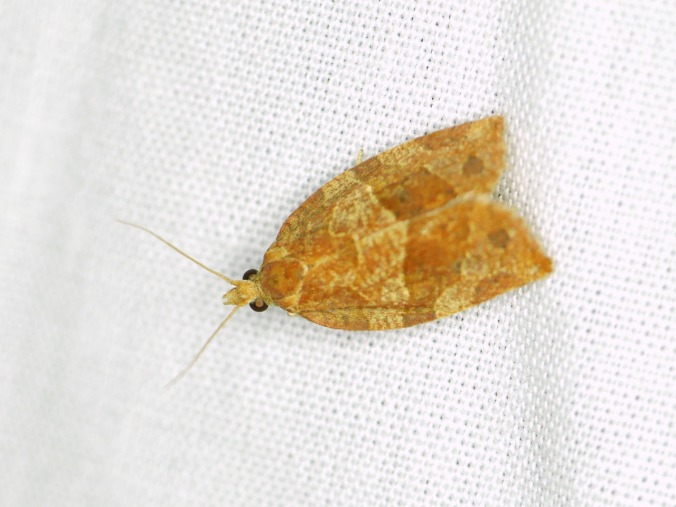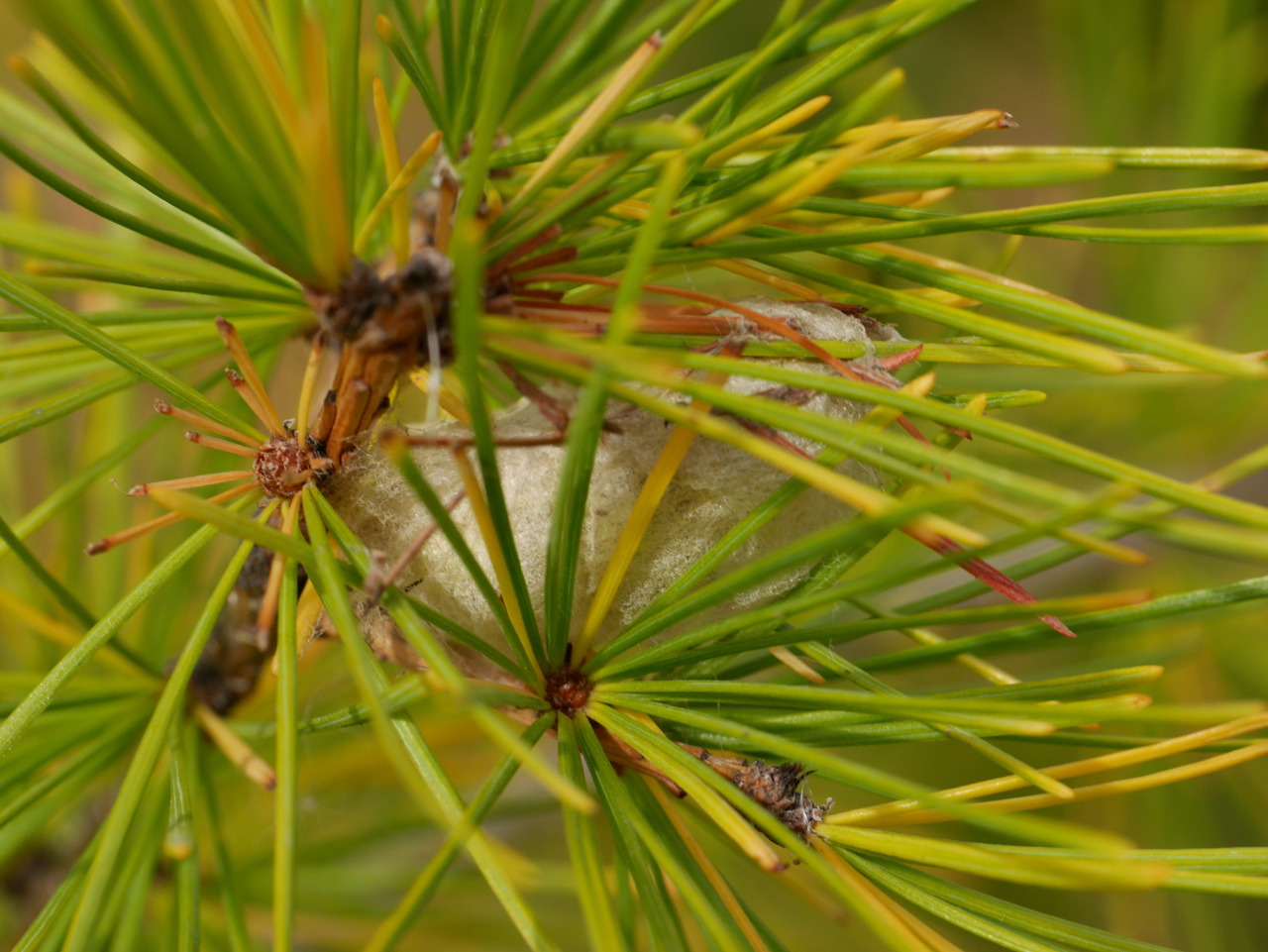
Pandemis pyrusana “Pandemis Leafroller Moth” Tortricidae
Clinton, MT
July 25, 2015
Robert Niese
Pandemis leafrollers are common in the west and are considered a pest on commercial apple, cherry, plum, and pear trees. As larvae, they roll up the sides of leaves into a tube along the mid-vein creating a shelter from predators. Larvae born early in the summer will pupate inside these shelters, but late summer larvae overwinter under bark before emerging to feed on fresh buds in the early spring. In addition to feeding on commercial fruit trees, this species is also known to chow down on alder (Alnus), willow (Salix), birch (Betula), dogwood (Cornus), aspen (Populus tremuloides), currants (Ribes), roses (Rosa), and honeysuckle (Lonicera), all of which are very common here in western Montana.








